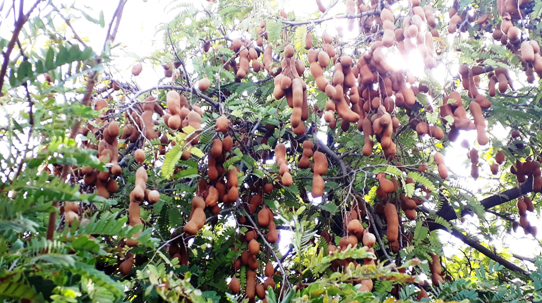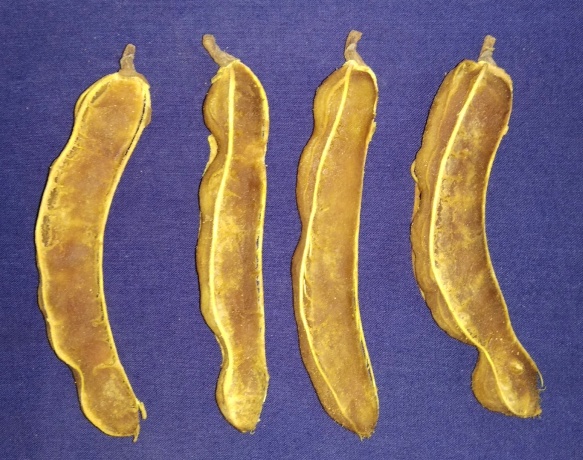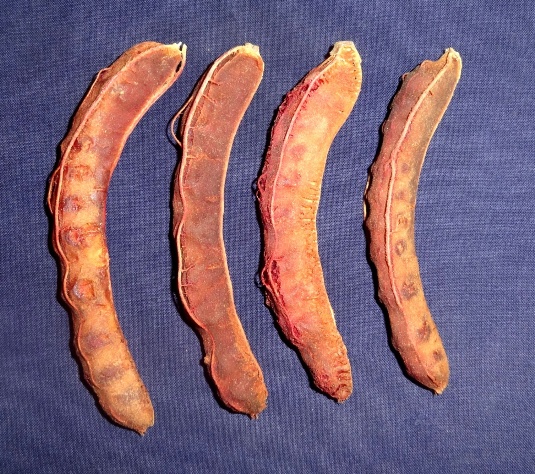इमली, शुष्क भूमि में खेती के लिए एक बहुउद्देशीय वृक्ष
Tamarind (Tamarindus indica L.) is a leguminous tree grown as waste land crop and is found throughout the tropic and sub-tropic terrain of country. It is almost found throughout the world and has become naturalized at many places particularly in India, South East Asia, tropical America, the Pacific Islands and also in the Caribbean.
Tamarind is a perfect crop for cultivation under dry land arid condition because of its hardy nature which requires very less of grower attention after the establishment. Therefore suitable cultivars need to be explored for the betterment of farmer of such region and also for maintaining the ecosystem stability.
In India, it is abundantly grown in Maharashtra, Tamil Nadu, Karnataka, Kerala, Andhra Pradesh, Telangana, Mizoram, Rajasthan and Gujarat.

Multipurpose use:
In India, tamarind is one of the most important common fruit tree and it is under cultivation from several centuries. Almost every part of it is being utilized in various sectors as discussed below.
1) Medicinal properties
- The fruit pulp which is the richest source of tartaric acid and can act as antimicrobial and antiseptic. It is being used in Indian Ayurvedic medicine against gastric and digestive problem.
- In traditional Thai medicine, the fruit of the tamarind is used as a carminative, laxative, expectorant and blood tonic.
- Tamarind has been used in the treatment of a number of ailments, including alleviation of sunstroke, Datura poisoning and the intoxicating effects of alcohol and ‘ganja’ (Cannabis sativa ). It is also said to aid in the cure of malarial fever.
- Boiled, pounded seeds are reported to treat ulcers and bladder stones and powdered seed husks are used to treat diabetes.
2) Value crop for food industry
- Tamarind having coloured pulp (pink-reddish to reddish-brown) with high titratable acidity percentage can be utilized in confectionery for storage purpose and also for giving natural colour to sweets.
- The pulp can withstand thermal processing and maintains the original flavour profile. The pulp in descended form, can be stored well for longer period of time without refrigeration due to its high acid content, which act as a natural preservatives.
- It is being used for the manufacturing of several products such as tamarind juice concentrate, pulp powder, pectin, pickle, chutneys, sauces, soups, jam, syrup, candy, refreshing tamarind drinks etc.
- Red tamarind is reported for rich content of anthocyanin (180 to 360 mg/g of unripe fruit), while comparing with other anthocyannin rich fruits like grapes (80-90 mg/g), cherry (70-75 mg/g) and jamun (120-130 mg/g). Hence it can be utilized as potential bio-colorant in food processing, pharmaceutical, brewery and confectionery industries to replace the existing use of carcinogenic inorganic colorants (Mayavel et al. 2018).


|
Brown pulp tamarind |
Reddish pulp tamarind |
3) Industrial usage
- Industrial use of tamarind includes extraction of polysaccharides, starch, tartarates, textile sizing, paper binding, jute weaving, adhesive making, dyeing, tanning, mordanting, purifying water and in coagulation of natural rubber. The kernels contain a polysaccharide having very good sizing properties, hence it is used in paper sizing, color printing, textile industries, tanning of leather, and also as a glue for wood.
- The proteins of tamarind seeds are reported to be of high biological value and compare well with properties of cereals, but meager in utilization.
- Tender leaves are also good fodder with 12-15% crude protein and seeds are ground to make delicious feeds for livestock. The seeds also yield amber coloured oil suitable for industrial use.
- Cultivar having more of canopy volume can be utilized for hosting lac insect (Kerria lacca) which deposits a viscous secretion called resin on the twigs. This product can be utilized for the production of varnishes (El-Siddig et al. 2006).
4) For ecosystem conservation
- Tamarind is a hardy tree which grows well under warm climatic conditions of tropics and subtropics. It is drought tolerant and found growing in waste-land. Further, it also performs well in deep soils and tolerates poor or rocky terrains. In view of its ability to withstand heavy winds, it is preferred as a wind break.
- The tree is widely planted in avenues and it also provides a valuable timber. Tamarind wood is used for various purpose namely preparation of agricultural implements, construction work, printing blocks and tent pegs, fuel, gum powder charcoal.
Conclusion
Being a waste land crop, tamarind has not gained its full potential. This is a crop of promise for dry land arid condition which requires very less attention of grower’s after its establishment and is rarely infested by any disease and insect-pest if properly managed.
The alternate bearing habit poses difficulty for farmer, which hinder its commercial exploitation. Therefore regular, high bearing and high pulp percentage cultivar needs to be distributed among farmer.
Coloured cultivar which are anthocyanin rich also needs to be promoted on large scale for its commercial exploitation in pharmaceutical and food industry.
Refrences
El-Siddig K, Gunasena H P M, Prasad B A, Pushpakumara D K N G, Ramana K V R, Vijayanand P and William J T. 2006. Tamarind (Tamarindus indica L.) Fruits for the future 1- revised edition. International Centre for Underutilized Crops, University of Southampton, Southampton, UK.
Mayavel A, Muthuraj K, Nagarajan B and Prabhu R. 2018. Genetic Variability Studies in Selected Clones of Red Tamarind (Tamarindus indica var. rhodocarpha) for Yield and Quality Traits. International Journal of Pure and Applied Bioscience, 6 (4): 174-180.
Authors:
Rajender Kumar1, S P S Solanki2, S M Choudhary3
1, 3Mahatma Phule Krishi Vidyapeeth, Rahuri-413722, Ahmednagar, MS
2 Punjab Agricultural University, Ludhiana-141004, Punjab
Email:
